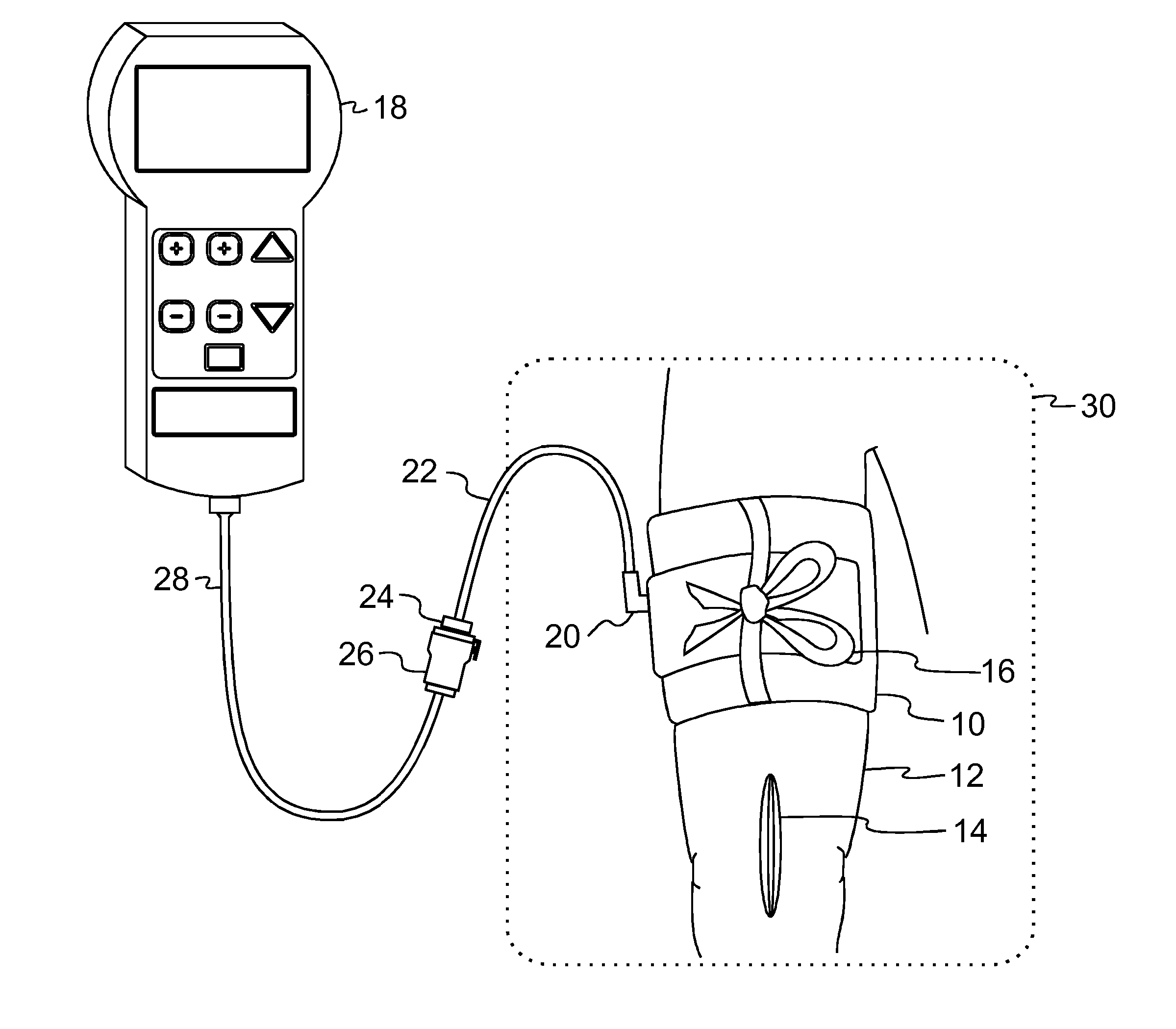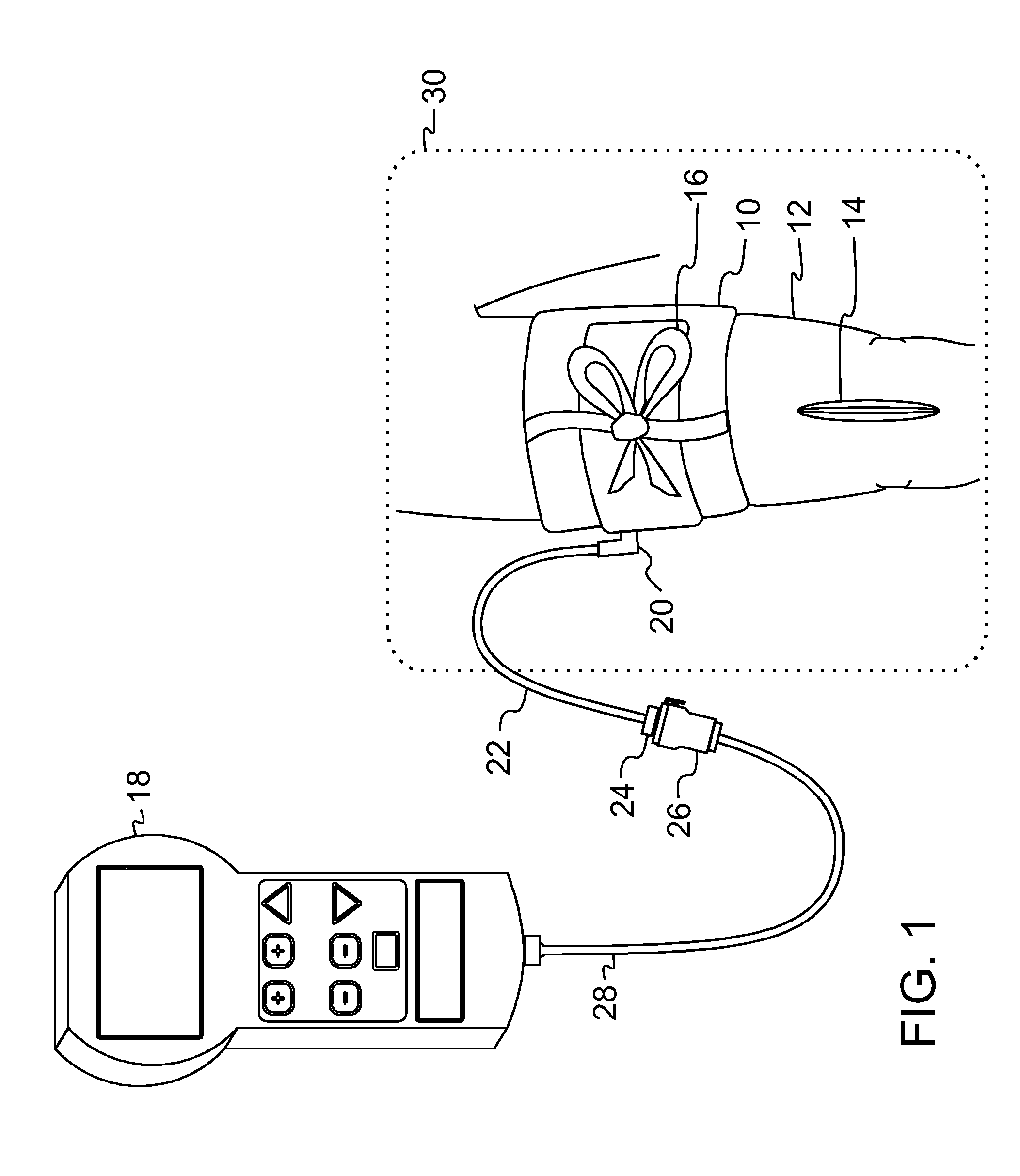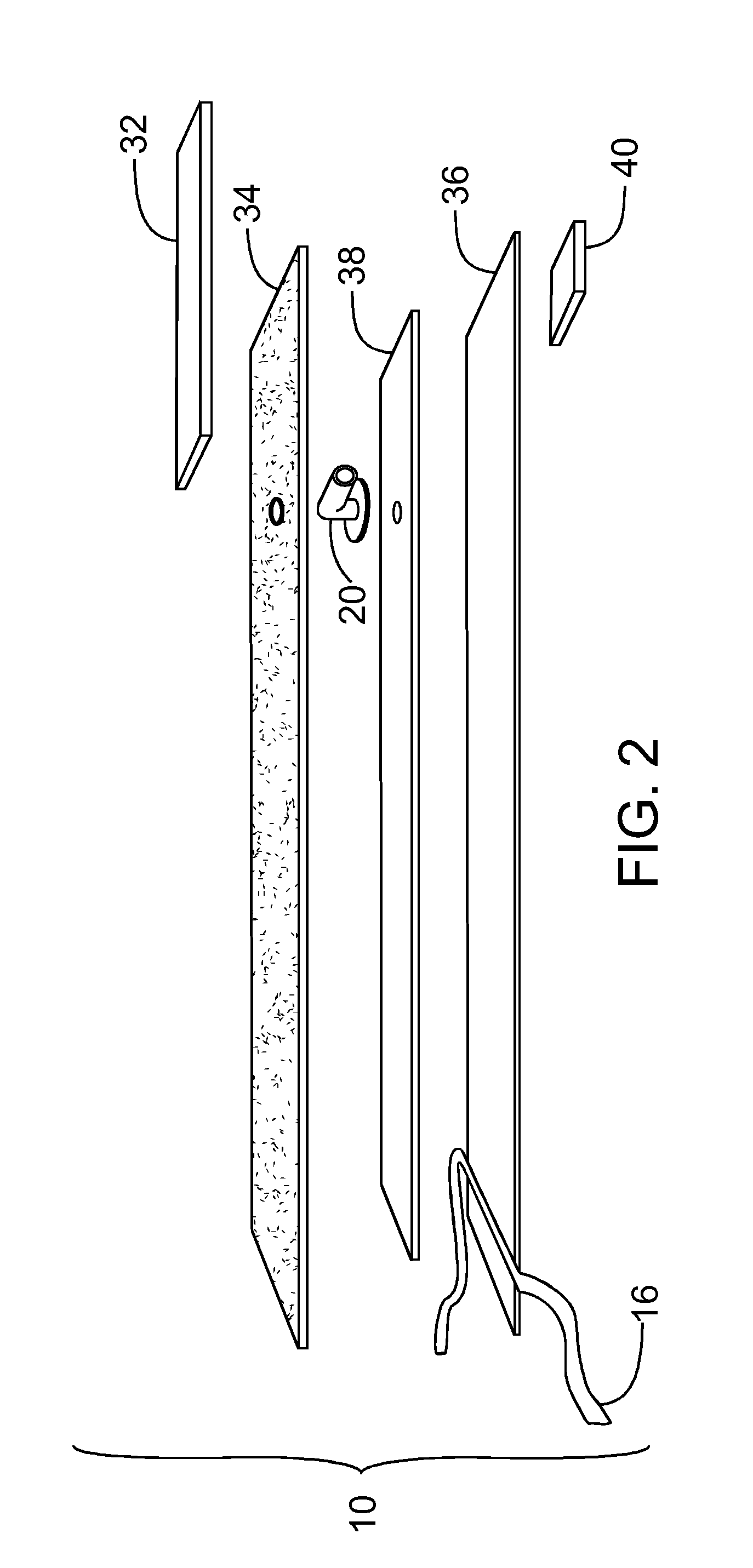The use of multiple
layers of such materials in prior-art cuffs has increased their overall thickness and stiffness, making these cuffs difficult for a surgical user to apply consistently.
Thicker and stiffer cuffs of the prior art may also degrade performance after cuff application so that higher tourniquet pressures may be required to reliably occlude
blood flow; this is undesirable because higher tourniquet pressures are associated in the surgical literature with a higher risk of patient injury.
The absence of a stiffener can lead to a reduction of the efficient application of pressure to the limb and thus can lead to an increase in the level of pressure required to stop
blood flow past the cuff and into the limb.
Also, the absence of a stiffener can lead to additional stresses in the outer cuff surface due to less constrained bladder expansion.
The thick outer layer extends to all of the cuff edges, and includes an area for sealing the inner layer to the thick outer layer to form an
inflatable bladder, resulting in the bladder always having a bladder width that is less than the width of the stiffener; this is undesirable because cuffs having narrower bladder widths require higher tourniquet pressures to stop
blood flow, and higher
tourniquet cuff pressures are associated with a higher risk of patient injury.
Also, this second type of stiffener configuration in cuffs of the prior art, in which the stiffener forms part of the inflatable bladder, greatly limits the extent to which the cuff can expand inwardly into
soft tissue when the cuff is pressurized; this limitation increases the pressure required to stop or occlude blood flow in the encircled limb, especially in obese patients and patients having large amounts of
soft tissue.
Further, the thick and stiff edges formed at the side edges of these prior-art cuffs may have a tendency to buckle towards the limb when the bladder is pressurized, leading to a potential soft-tissue
hazard.
This reduces the effectiveness of the stiffener in directing
cuff pressure toward the encircled limb across the width of the cuff, and it reduces the extent to which the cuff can expand inwardly when pressurized, thereby making its performance more sensitive to variations in application technique and thereby leading to the possible need for higher tourniquet pressures to stop blood flow past the cuff and into the limb, particularly in patients having large amounts of
soft tissue and in patients with poor
muscle tone.
Further, an unsecured stiffener within the cuff bladder is not as effective as a secured stiffener in helping to prevent the cuff from twisting or rolling on the limb.
In addition, to reduce the limitations of performance that are inherent in a cuff having an unsecured stiffener within the inflatable bladder, the width of the stiffener in prior art cuffs must be as close as possible to the bladder width; this can impair cuff performance and requires precise alignment of the stiffener during manufacture.
It is not desirable to attach the tie strap to the cuff surface facing the patient's limb, where such attachment may distort the cuff surface and thus lead to uneven pressure distribution and possible soft-tissue injury.
Some prior art cuffs such as Spence '304 do not include a tie strap, but such cuffs are less conveniently applied, and may result in an applied cuff that is less snug and less effective in transmitting pressure from the cuff to the limb.
Typical markings carried on tourniquet cuffs of the prior art have included labels sewn to cuff components and ink
lettering and symbols marked on cuff surfaces but such markings have increased per-unit manufacturing costs.
Unauthorized reprocessing and reuse of such tourniquet cuffs in multiple
surgical procedures may be hazardous for patients.
However, such marking on prior-art cuffs may be easily removed or obscured if the cuffs are reprocessed, leading to the possibility that surgical staff may unknowingly use disposable tourniquet cuffs that have been reprocessed in a manner not authorized by the manufacturer and hazardous to patients.
Too small an overlap of the cuff may compromise the uniform application of pressure around the limb if the bladder of the cuff does not completely encircle the limb, may result in inadequate
occlusion of the underlying blood vessels and may lead to unexpected cuff release during
surgery.
Too much overlap of some prior-art cuffs may make cuff application more difficult, may lead to higher pressure being required in the cuff to occlude underlying blood vessels, may decrease cuff stability when pressurized, and may result in injuries to underlying soft tissues.
This reduces the possibility of wrinkling, pinching, bruising and other injuries to the
skin and soft tissue encircled by such cuffs.
The manual labor component of cuff
assembly is high, especially where multiple sewing and sealing operations are required.
 Login to View More
Login to View More  Login to View More
Login to View More 


